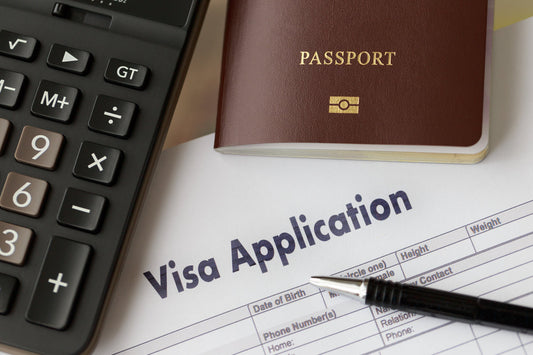
Capital Amount Decisions for New Japanese Corporations
Yoshio YamaguchiShare
When establishing a company, you must determine and contribute the amount of capital stock. The capital stock amount is recorded in the articles of incorporation and certificate of registration (corporate registry), making it publicly accessible. This article explains the legal regulations that need to be considered when determining capital stock.
What is Paid-in Capital?
Paid-in capital represents the initial funds used to start a business, consisting of the monetary investment made by shareholders into the company.
Historically, it served as a benchmark for securing company assets and was considered crucial for protecting creditors' interests. However, a high paid-in capital amount doesn't necessarily mean a company actually holds that much in assets. Since the implementation of the Companies Act in 2005 and the abolition of minimum capital requirements, its significance has diminished.
In this article, paid-in capital refers to the legal capital as defined by corporate law, which appears as "paid-in capital" in both the company registry and balance sheet. It should be distinguished from capital reserves and net assets. When considering legal and regulatory requirements, it's advisable to determine your paid-in capital amount based on the following considerations.
Tax Considerations
Corporate Tax Rates
The standard corporate tax rate is 23.2%. However, small and medium-sized enterprises (SMEs) with capital of 100 million yen or less qualify for a reduced rate of 15% on income up to 8 million yen. Companies with capital exceeding 100 million yen are taxed at 23.2% on all income. For details on SME qualification, see "Special Tax Benefits for SMEs" below.
For example, with an income of 30 million yen:
For large corporations (capital over 100 million yen):
- Tax = 30 million yen × 23.2% = 6.96 million yen
For SMEs (capital of 100 million yen or less):
- First 8 million yen: 8 million yen × 15% = 1.2 million yen
- Remaining amount: 22 million yen × 23.2% = 2.784 million yen
- Total tax: 3.984 million yen
The difference amounts to 2.976 million yen. This gap widens further when local taxes are factored in.
Enterprise Tax
Enterprise tax consists of income-based, value-added, and capital-based components. SMEs with capital of 100 million yen or less are exempt from size-based taxation (value-added and capital components).
Special Tax Benefits for SMEs
The Tax Special Measures Law provides several tax benefits for small and medium-sized corporations with capital of 100 million yen or less:
A: Special reduced tax rate for income up to 8 million yen (see above)
B: R&D tax credits (Special Measures Law Article 42-4)
B: Tax credits for wage increases (Special Measures Law Article 42-12-5-2)
B: Immediate write-off of depreciable assets worth 300,000 yen or less (Special Measures Law Article 67-5-1)
C: Full deduction of entertainment expenses up to 8 million yen annually
The definition of small and medium-sized corporations varies slightly for each benefit, but generally includes:
- Corporations with capital or investment amount of 100 million yen or less
- Excludes corporations that are 100% owned by companies with capital of 500 million yen or more (for benefits A and C)
- Excludes corporations owned above a certain percentage by companies with capital exceeding 100 million yen (for benefit B)
- Excludes corporations controlled above a certain percentage by companies that are 100% owned by companies with capital of 500 million yen or more (for benefit B)
Per Capita Tax
Corporations are subject to per capita taxes from both prefectures and municipalities. The per capita tax amount is determined by capital and number of employees, and applies regardless of whether the company is profitable or operating at a loss. Note that the relevant figure is "capital, etc." rather than just "capital" - this includes capital reserves.
Per Capita Tax Amount (Prefectural Tax)

Per Capita Tax Amount (Municipal Tax)

Consumption Tax
A taxable business operator refers to a business that files consumption tax returns and pays taxes or requests refunds. A tax-exempt business operator is one that is exempt from these obligations. To qualify for tax-exempt status, small businesses must meet the following requirements:
- Taxable sales during the reference period (*1) must be 10 million yen or less
- AND taxable sales or salary payments during the first 6 months of the previous tax period must be 10 million yen or less
- AND must not be registered as a qualified invoice issuer
- For the first and second business terms after establishment, instead of the above taxable sales requirements, the capital amount must be 10 million yen or less
(*1) The reference period refers to the business year that is two fiscal years prior to the current tax period.
Therefore, to qualify as a tax-exempt business during the first and second terms after establishment, the capital amount must be set at 10 million yen or less.
Dividend Regulations
Japanese corporate law regulates how much companies can distribute as dividends (distributable amount). The distributable amount is roughly calculated by subtracting stated capital, capital reserves, and retained earnings reserves from net assets. Therefore, the higher the stated capital, the lower the distributable amount.
Business Manager Visa
Foreign nationals need a Business Manager visa to manage a company in Japan. One requirement for this visa is "investment of 5 million yen or more." Having stated capital of 5 million yen or more automatically serves as proof of meeting this investment requirement.
Regulatory Perspective
While some industries require government licenses and permits to operate, we recommend consulting experts about whether there are specific stated capital requirements in the company registry or balance sheet.
For example, while many websites indicate that employment placement agencies need a minimum stated capital of 5 million yen, this appears to be inaccurate.
More precisely, the requirement is that "the amount obtained by subtracting total liabilities from total assets (excluding deferred assets and goodwill) - referred to as 'standard asset amount' - must be equal to or greater than the amount calculated by multiplying 5 million yen by the number of offices where the applicant intends to conduct fee-based employment placement services." This does not specifically mandate 5 million yen in stated capital.
Similarly, travel agencies, construction companies, and transportation businesses appear to have regulations on net asset amounts rather than stated capital requirements.
Reference articles:
- Corporate Tax Rates and Calculation Examples
- Key Decisions When Establishing a Company
- Establishing Japanese Subsidiaries of Foreign Corporations
- Choosing a Fiscal Year End
- Choosing Between a KK and a GK
Conclusion
When deciding on capital investment for your company, carefully consider the tax implications, dividend regulations, and visa requirements that align with your business goals. While the minimum capital requirement was abolished in 2005, the amount you choose still impacts corporate tax rates, tax benefits for SMEs, and consumption tax obligations.
Need help? Contact us to determine the optimal capital structure for your specific situation and industry requirements.



